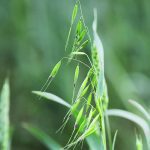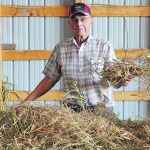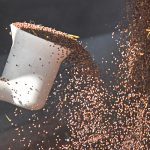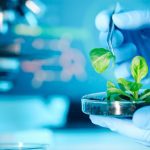SASKATOON — Crop organizations say the federal government’s research priorities are increasingly at odds with those of farmers. The issue surfaced during the Saskatchewan Canola Development Commission’s annual general meeting. “Are we in alignment or are we starting to see what our priorities are as growers isn’t necessarily the same priorities as the federal government?” […] Read more
Tag Archives plant research

Gov’t and grower groups commit $4.2 million for root rot research
WINNIPEG — Serious dollars have been committed to a serious problem for pulse growers — root rot. Saskatchewan agriculture minister David Marit announced today $2.5 million in provincial and federal funding to find solutions for root rot in peas and lentils. In addition, Saskatchewan Pulse Growers, Western Grains Research Foundation, Alberta Pulse Growers Commission, Results […] Read more

Genomic crop research goes wild
While the vast majority of crops produced in Canada have been introduced from elsewhere, there is a lack of wild type relatives existing in nature for these crops. This is not the case in many other parts of the world where plants used for domesticated food production have wild types that bear genetic similarity. In […] Read more

Producer assists with university pea research
Saskatchewan grower says farmers must take a more active role in developing new varieties to improve production
A southern Saskatchewan farmer is espousing the need to co-operate with researchers and even take the lead in developing new varieties to better improve crops on the Prairies. Ernest Anderson farms in the province’s southwest and is working with University of Calgary researchers on how to increase the protein content of yellow peas. “Pulses don’t […] Read more
Bacterial proteins soak plants’ cellular plumbing
A family of ‘weird’ proteins make plants sick by punching holes in their cell membranes and forcing them to drink
Plant pathogens have become extremely efficient at infecting crops and injecting harmful proteins into cells for their own benefit. From brown spot in beans, bacterial speck in tomatoes or fire blight in fruit trees, a family of proteins called AvrE/DspE causes havoc in hundreds of crops worldwide. Now, researchers at Duke University in North Carolina […] Read more
Canola industry gets research boost
A federal funding announcement for Canada’s Canola Cluster aims to drive the sustainable growth of Canada’s canola industry. The $9 million comes from the AgriScience Program-Clusters Component, an initiative under the Sustainable Canadian Agricultural Partnership (S-CAP). “This new canola cluster will build on the great work of the previous one, which I was proud to […] Read more

Commodity group tackles thorny research question
Where have all the crop scientists gone? The Manitoba Crop Alliance asked that question after looking for places to park some of its check-off money. The group wanted to fund research into specialty crops such as flax, corn and sunflowers but couldn’t find scientists to do the work. Agriculture Canada no longer employs a researcher […] Read more

Where are the crop scientists?
The Manitoba Crop Alliance represents farmers who grow wheat, barley, corn, sunflowers and flax in the province. But the organization has a problem. As part of its mandate, the alliance invests check-off dollars into research projects to help Manitoba farmers become more productive and sustainable. Fulfilling that mandate is not easy because the group can’t […] Read more

U.S. scientists identify carbon dioxide sensor in plants
Researchers have known for decades that plants can sense carbon dioxide concentrations that trigger pores in their leaves to open or close and control water evaporation. Plants can lose more than 90 percent of their water this way. But identifying the sensor that regulates how plants open and close their pores and understanding how it […] Read more

Soil microbes affect drought response
Researchers at the Donald Danforth Plant Science Center in Missouri are seeking to bridge the gap between laboratory and field studies of crop-microbe relationships and their influence on drought tolerance. “Lab and field studies both have advantages and disadvantages,” said scientist Rebecca Bart. “The goal of this research was to combine multiple different experimental systems […] Read more




